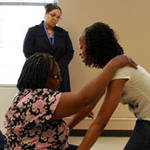Kaiser Health News Article
 Think dangerous jobs, and a police officer entering a dark hallway or a firefighter running into a burning building might come to mind. But even more risky? Nursing assistants, who have an occupation with the nation’s second highest rate of work-related injuries or illness.
Think dangerous jobs, and a police officer entering a dark hallway or a firefighter running into a burning building might come to mind. But even more risky? Nursing assistants, who have an occupation with the nation’s second highest rate of work-related injuries or illness.
Nursing aides and other health care workers can slip or fall or strain themselves trying to lift people or equipment. They also face unique hazards such as workplace violence, exposure to “bloodborne pathogens,” infectious diseases such as tuberculosis or dangerous chemicals and drugs.
The U.S. Department of Labor’s Occupational Safety and Health Administration wants to do something to make the jobs safer.
Online CNA Inservice for Behavior Problems and Workplace Violence - Describes behavior problems common to elderly populations. Causes, risk factors, potential problems, goals, and interventions are outlined for the behavior problems of wandering, lack of smoking safety awareness, manipulative behaviors, socially inappropriate behaviors, and abusive behaviors. Safety instructions are given to protect residents, clients, and staff members from workplace violence and injury.